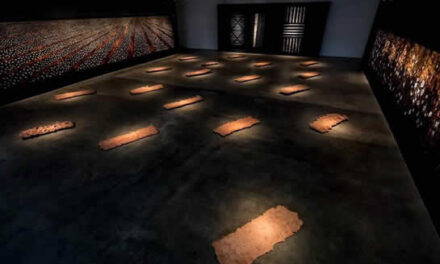There was extra anticipation for this concert of the University of North Carolina Symphony Orchestra. Betweeen Classical and Romantic works, musical director Tonu Kalam chose to showcase three new works for guitar and orchestra by Billy Stewart (b.1953). Stewart has had an extraordinary career with the music department. He began teaching guitar in his sophomore year (1972) and has continued in that position since his graduation (B.M.Ed.) in 1975. Beside studying composition with Roger Hannay, he has taken masterclasses with many famous international classical and jazz guitar players.
The premiere of Symphony No. 1 in C, Op. 21, by Ludwig van Beethoven (1770-1827) was described by a Viennese critic as “a caricature of Haydn pushed to absurdity.” At the time, Beethoven had an uneasy relationship with the older composer, who was his teacher. Sloppy counterpoint exercises aside, the composer drew heavily upon Haydn’s “treatment of sonata form, of large-scale harmony, of the emotional power of contrast, and of ways to achieve unity within variety” (Jonathan D. Kramer: Listen to the Music).
Symphony No. 1 in C is written in four movements. After a slow introduction, opening with a dissonant first chord, the Allegro con brio bristles with driving energy. The slow movement has a simple theme which is embellished at length. Although the third movement is marked “Menuetto,” it is an irrepressible scherzo that serves as a counterbalance to the weightier surrounding movements. The finale starts with a simple scale worked slowly upward through the violins until a dance-like theme is unleashed in rambunctious and witty rondo.
The stage of the Beasley-Curtis Auditorium in Memorial Hall was packed with eager and alert student musicians. Kalam led a spirited and stylish performance and his players responded to his every adjustment of dynamics, rhythm, and tempo instantly. The large string sections articulated their parts with remarkable clarity and unity. The horn section, led by Nick Konz, was really fine. The woodwinds met Beethoven’s demands superbly. The prominent solos by flutist Katherine Gora Combs and oboist Emily Harmon were very effective and satisfying.
Three Pieces for Guitar and Orchestra by Stewart began as adaptations and expansions or orchestrations of earlier works. Part I, “Under the New Moon,” is a modification of a draft called “Rustler’s Moon.” An introduction was added to “a constant stream of eighth notes leading to a section of chords.” He wrote parts based on the original chords of the solo. His chosen format was a woodwind quintet, timpani, and strings with a double bass. After the solo between the two extended orchestral treatments of the main theme (“two statements of a written ‘head'”), the work ends with a restatement of the opening. Part II, “Whispers,” is a slow, quiet piece, originally written for the composer’s wife, Sarah. He added a “14-measure introduction featuring the orchestra” to which “tubular bells [were] added to mimic and enhance the harmonics of the guitar.” Part III, “A Joyful Noise,” derived from several versions including Stewart’s first published piece (“Joy!”), written for guitar and flute, for his first wife. Timpani add power while “the largest change was the writing of the stretto played by the orchestra (first statement of the theme by French horn and guitar).”
For this world premiere of Stewart’s Three Pieces, Kalam greatly reduced the string sections to a few stands each string with one double bass, horn, woodwind quintet, timpani, and tubular bells. Stewart’s guitar was discretely amplified; his tone was pleasing and his playing, assured. Balance with the orchestra was usually excellent except for a few portions of the “Under the New Moon.” “Whispers” was immediately attractive, with its appealing solos by woodwind players, especially flutist Abby Jean Bergman and the warm English horn playing of Claire Staresinic. A particularly appealing portion found Stewart’s solo supported by the leaders of each string section. Bergman’s flute paired nicely with Stewart in “A Joyful Noise.” Stewart’s composition and performance were rewarded with multiple curtain calls by an enthusiastic audience.
The concert ended with the demanding and vivid Capriccio Espagnol, Op. 34, by Nicolai Rimsky-Korsakov (1844-1908). It consists of five strongly contrasted sections, many based on various Spanish dance rhythms, and each scored to maximize a rich tapestry of orchestral color. Kalam’s musicians responded to every twist and turn of the score, delivering many remarkably fine solo turns. Concertmaster Kyle J. Michie had several prominent solos while principal cellist Devin Cornacchio had fine, rich toned solo. Among the woodwinds were those by principal players, clarinetist Andrew Huang, flutist Combs, oboist Harmon, bassoonist Skye Satz, and Staresinic on English horn. Harpist Naomi Sutherland played her show-stopper episodes with considerable flair. As with much of the concert, Thomas R. Marshall led the horn section brilliantly. The whole orchestra played the socks off this great showpiece!
*Updated 12/7/18 to add one name and correct another.











